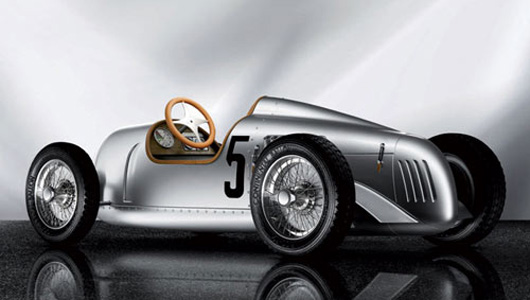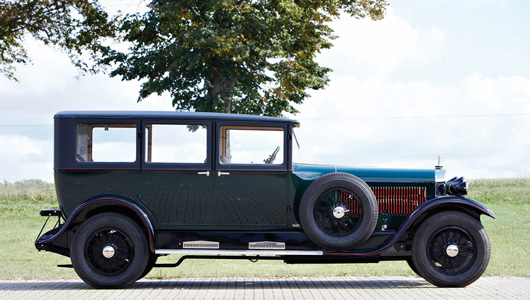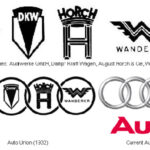Audi was officially launched as Audi AG in 1985 and has its roots in the renowned car company called Auto Union AG.
Auto Union AG was established in 1932 after the merger of four companies based in Saxony, including Audi (founded in 1909), Horch (founded in 1899), Wanderer (founded in 1885), and DKW (founded in 1904).
The iconic four rings logo represents the combination of these four companies: Audi, DKW, Horch, and Wanderer. This emblem was introduced in 1932 under the name Auto Union AG. Subsequently, Auto Union AG merged with NSU in 1969, both playing significant roles in the advancement of the automotive industry. Audi AG was then formed by the merger of NSU and Auto Union AG in 1985.

Audi AG has a rich and evolving history. Prior to the end of the 19th century, August Horch established a company known as Horch & Cie. Motorwagen Werke in Cologne. In 1902, the company was relocated to Zwickau in Saxony, Germany, and in 1904, it was reestablished as a public company. In 1909, due to a dispute with the board of directors and supervisors, August Horch left the company and founded a second manufacturing plant in Zwickau a few weeks later. However, he couldn’t use his own name as it was a registered trademark, so he chose a Latin word as a substitute: “Horch” (meaning “listen”) became “Audi”. The suggestion to use the name Audi came from a Latin-speaking student who was the son of one of Horch’s business partners.
The production of cars began on a small scale, following Horch’s principle of building “powerful, high-quality cars”. Within a few years, Audi had expanded and became the most renowned brand in the German automotive industry. It achieved initial success in various competitions, including victories in the Austrian Alpine Rallies between 1911 and 1914, which brought global recognition to the Audi name. The Audi Type C 14/35 PS was particularly successful, earning the title of “Alpine Victor”.

The Audi museum houses 13 of the oldest surviving Audi models from around the world. These historical models attract immense interest, along with the captivating stories from the brand’s early days. The exhibition organizers portray the stories through visual illustrations, resembling a comic book.
Each page depicts legends, special events, and milestones in Audi’s history. These include the selection of the name, August Horch’s departure, the introduction of the first eight-cylinder model, pioneering the use of reverse steering in Germany, the launch of the first Audi-branded radiator, the acquisition of DKW, and Auto Union’s continuous innovations. The chronicle continues until the outbreak of World War II, when the second-largest car manufacturer in Germany ceased the production of civilian cars. As explained by Stefan Felber from the Audi museum, “Audi’s history is too fascinating for a traditional exhibition. We want viewers, including children, to easily grasp it as they browse for the first time.”
The Front Roadster, an elegant car that holds a significant place in Audi’s history, had only two prototypes built in 1935, both of which have disappeared. To revive this heritage, Zinke, an expert company based in Zwönitz, has meticulously crafted a true replica using images of the car as a guide. Now, this roadster is showcased at the Audi museum. Other highlights of the exhibition include the Audi Type A from 1911, which made its debut at the company’s headquarters in Ingolstadt. It was the 78th car produced by Audi in Zwickau and has the longest recorded history. This unique Type A, equipped with a 26 horsepower engine, can achieve a top speed of 75 km/h.
Another remarkable artifact is an Audi Type E, built in 1913 with a powerful 55 horsepower engine and a 5.7-liter capacity. It was the largest engine manufactured by Audi during its time in Zwickau. This model remained in production until 1924.
In 1923, Audi achieved a significant technical milestone with the Audi Type M, one of their most impressive and luxurious cars in Germany. This model featured a vertically designed, handcrafted, lightweight alloy engine block and bevel gear-equipped transmission with a new air intake system. Notably, it was the first Audi model to have brakes on all four wheels. The relatively high price of 22,300 Reichsmark (the old German currency) made it unaffordable for many. To date, only 3 out of the 288 sold cars are still in existence, along with an additional chassis. The displayed car at the museum serves as a prime example, illustrating the model’s typical technical features and its sophisticated design. Following the Audi Type M, the pioneering eight-cylinder model, the Audi Type R “Imperator,” with a powerful 100 horsepower, was introduced in 1929 and remains the only surviving specimen worldwide.
In 1931, Audi started manufacturing the Type P, the brand’s first compact car in history. For many years, it was believed to have disappeared until one was discovered in Ludwigsburg in 2003. Records indicate that the last owner was the mayor of a Swabian town in Germany, and the car had been forgotten since 1955.
Source: PL&XH/Compiled












































